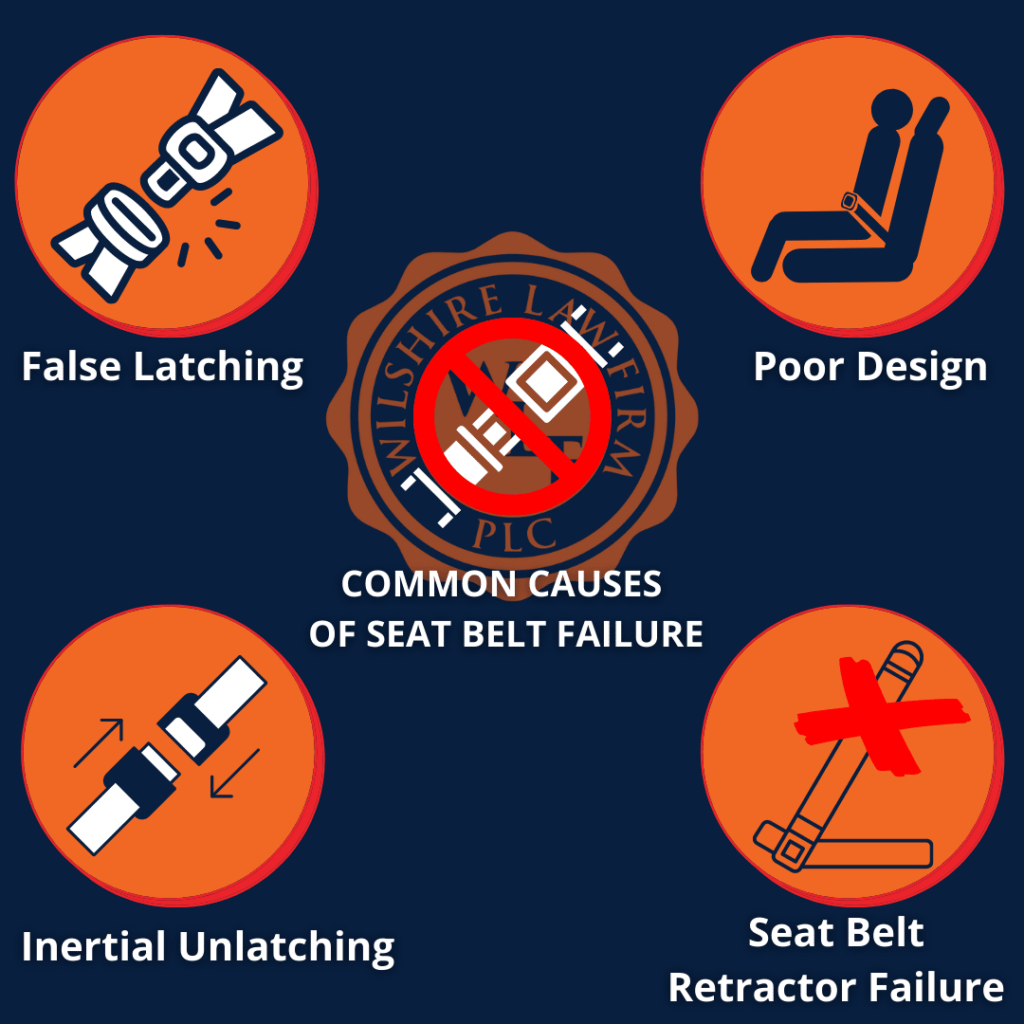If you’re like most Californians, you wear your seat belt when you get in a car. It’s a wise precaution to take – wearing a seat belt reduces the risk of death in a car accident by 45%, and the likelihood of incurring a serious injury by 50%.
Unfortunately, when seat belts fail, drivers and passengers often sustain serious injuries. If a defective or failing seat belt injures you, you deserve compensation. At Wilshire Law Firm, our attorneys are committed to fighting for you and your rights – call now for a free, discreet consultation!
Do I Have to Wear a Seat Belt in California?
First things first – yes, wearing a seat belt is mandatory in California for drivers and passengers over the age of 16. California law also mandates that parents utilize safety seats for children 8 or under, and that children between the ages of 8 and 16 use either a booster seat or safety belt, depending on their height and weight.
Failing to comply with California’s seat belt laws can result in a $20 fine for a first offense, followed by a $50 fine for subsequent infractions. Additionally, offenders may be required to attend traffic school classes.
There are circumstances where drivers or passengers may be excused from wearing a seat belt. If:
- An emergency requires a driver or passenger to take off their seat belt;
- A driver or passenger has a medical condition that prevents them from wearing a seat belt; or
- A law enforcement officer issues a seat belt code violation to a driver or passenger without having probable cause to stop the vehicle;
The driver or passenger may not face legal penalties for violating California’s seat belt code.

How Do Seat Belts Fail?
When most people think of vehicle parts that can malfunction, seat belts aren’t exactly the first thing that comes to mind. However, they fail more commonly than most people think. According to the NHTSA, around 3 million injuries and 40 thousand fatalities occur each year due to seat belt failures.

Let’s look at some of the most common ways seat belt failures happen:
- Seat belt releases and inertial unlatching. Sometimes, when a significant amount of force is exerted on a belt latch – such as when a driver or passenger suddenly lurches forward or during a rollover – the latch releases, causing the belt to fail. This can occur either due to the latch mechanism breaking under stress or because the wearer accidentally engaged the release mechanism.
- False latching. Most people judge whether their seat belt is fastened by the clicking sound the latch makes when the catch is inserted into the buckle. Unfortunately, belts don’t always fasten fully. A defective or failing latch could cause a seat belt to come undone in an accident.
- Seat belt retractor failure. When seat belt retractors fail, the belt weave goes slack. As a result, the passenger or driver may lurch forward or slam into other parts of the car.
- Poor seat belt design. Some seat belts – especially those mounted on doors or designed to only go over laps, instead of going over both the chest and lap – are more likely to fail.
- Material defects. Sometimes, companies use defective materials when manufacturing seat belt weaves and latches. Belts produced with defective materials are more likely to fail when put under stress.
If you believe that a seat belt failure caused or contributed to injuries you sustained in an accident, you should contact a personal injury attorney.
How Do I Know a Seat Belt Failed?
A seat belt failure may have occurred if:
- Drivers or passengers who claim they fastened their belts before an accident are not wearing a belt post-accident;
- Material evidence suggests that a seat belt failed, such as a torn weave, a broken or shattered catch or buckle, etc.;
- Drivers or passengers suffer severe injuries despite a relatively minor crash, or were ejected from the vehicle despite fastening a seat belt.
When seat belts fail, drivers and passengers often suffer from one or more of the following injuries:
- Traumatic brain, head, or spine injuries;
- Cracked sternum;
- Vertebrae fractures;
- Burst appendix;
- Ruptured spleen;
- Bowel injuries;
- Intestinal injuries;
- Soft-tissue damage;
- Aneurysms;
- Scarring and disfigurement;
- Contusions;
- Concussions.
Vehicle and seat belt manufacturers can be held liable if a belt fails.
Proving Seat Belt Failure in California
The following types of evidence regularly appear in seat belt failure cases:
- Eyewitness accounts from other vehicle occupants stating that the plaintiff fastened their seat belt before departing, or that the belt became unfastened during the accident;
- Material evidence of a defective or faulty seat belt, often uncovered by first responders or law enforcement examining the scene of the accident;
- Expert witness accounts testifying that evidence of a seat belt failure is present at an accident site or that a belt failure caused or contributed to the plaintiff’s injuries (and if so, to what degree).
Filing a personal injury lawsuit can help you obtain the compensation and justice you deserve. You could obtain compensation for medical expenses, lost wages, pain and suffering, and more.
At Wilshire Law Firm, our team provides clients with the care and counsel they deserve. Contact us online or via phone at (866) 877-4189 to schedule a free, confidential consultation with our team.











